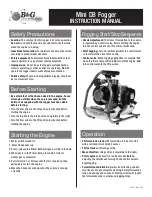
Basic principles of strain gauge technology
EP3356-0022
16
Version: 1.4
The used measuring range of the load cell must be at least 4 kg. The minimum application range can lie in
any range between E
min
and E
max
, e.g. between 2 kg and 6 kg if a tare mass of 2 kg already exists for
structural reasons. A relationship between n
max
and V
min
is thereby likewise apparent: 4000 * 1 g = 4 kg .
There are further important characteristic values, which are for the most part self-explanatory and need not
be discussed further here, such as nominal characteristic value tolerance, input/output resistance,
recommended supply voltage, nominal temperature range etc.
Parallel connection of strain gauges
It is usual to distribute a load mechanically to several strain gauge load cells at the same time. Hence, for
example, the 3-point bearing of a silo container on 3 load cells can be realized. Taking into account wind
loads and loading dynamics, the total loading of the silo including the dead weight of the container can thus
be measured.
The load cells connected mechanically in parallel are usually also connected electrically in parallel.
Since the four M12 sockets of the EP3356 are internally connected to one another, an external parallel
connection is not necessary: if several load cells are connected to the EP3356, they are automatically
connected in parallel. Up to four load cells can be connected.
The three load cells in the above example (silo container) can thus be connected to any three of the M12
sockets of the EP3356.
Note:
• the load cells must be matched to each other and approved by the manufacturer for this mode of
operation
• the impedance of the load cells must be large enough that the maximum output current of the
reference voltage U
ref
is not exceeded: 350 mA.
Fig. 7: Example: Parallel connection of three load cells. Up to four load cells can be connected in parallel.
Sources of error/disturbance variables
Inherent electrical noise of the load cell
Electrical conductors exhibit so-called thermal noise (thermal/Johnson noise), which is caused by irregular
temperature-dependent movements of the electrons in the conductor material. The resolution of the bridge
signal is already limited by this physical effect. The rms value e
n
of the noise can be calculated by e
n
=
√4kTRB
In the case of a load cell with R
0
= 350 Ω at an ambient temperature T = 20 °C (= 293 K) and a bandwidth of
the measuring transducer of 50 Hz (and Boltzmann constant k = 1.38 * 10
-23
J/K), the rms e
n
= 16.8 nV. The
peak-peak noise e
pp
is thus approx. e
pp
~ 4* e
n
= 67.3 nV.
Содержание EP3356-0022
Страница 2: ......
Страница 79: ...Commissioning Configuration EP3356 0022 79 Version 1 4 Fig 49 Confirming program start ...
Страница 90: ......
















































